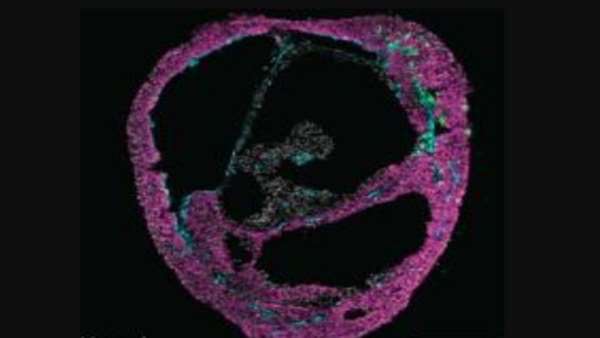Self-organizing human heart organoids in a dish
Biologists have used human pluripotent stem cells to grow sesame-seed-sized heart models, called cardioids, that spontaneously self-organize to develop a hollow chamber without the need of experimental scaffolds.
Biologists have used human pluripotent stem cells to grow sesame-seed-sized heart models, called cardioids, that spontaneously self-organize to develop a hollow chamber without the need of experimental scaffolds. This advance allows for the creation of some of the most realistic heart organoids to date.
Previously, scientists have built 3D cardiac organoids via tissue engineering, an approach that generally involves assembling cells and scaffolds like building a house out of brick and mortar. But these engineered organoids do not have the same physiological responses to damages as human hearts and thus often fail to serve as good disease models.
Mendjan and his team wanted to mimic development by self-organization in a dish. They coaxed stem cells to self-organize by activating all six known signaling pathways involved in embryonic heart development in a specific order. As the cells differentiated, they started to form separate layers, similar to the structure of the heart wall. After one week of development, these organoids self-organized into a 3D structure that had an enclosed cavity, a similar spontaneous growth trajectory as human hearts. In addition, the team found the cardioids' wall-like tissue contracted rhythmically to squeeze liquid around the inside the cavity.
The team also tested how the cardioids respond to tissue damages. They used a cold steel rod to freeze parts of the mini-hearts and killed many cells at the site. Cell death is commonly observed after injuries such as a heart attack. Immediately, the team saw cardiac fibroblasts -- a type of cell responsible for wound healing -- start to migrate toward the injury sites and produce proteins to repair the damage.
The team has plans to grow cardiac organoids with multiple chambers like what's seen in a real human heart. Many congenital heart diseases happen when other chambers start to form, so the multi-chamber model would help doctors better understand how defects develop in fetuses.
https://www.sciencedaily.com/releases/2021/05/210520133927.htm




ارسال به دوستان